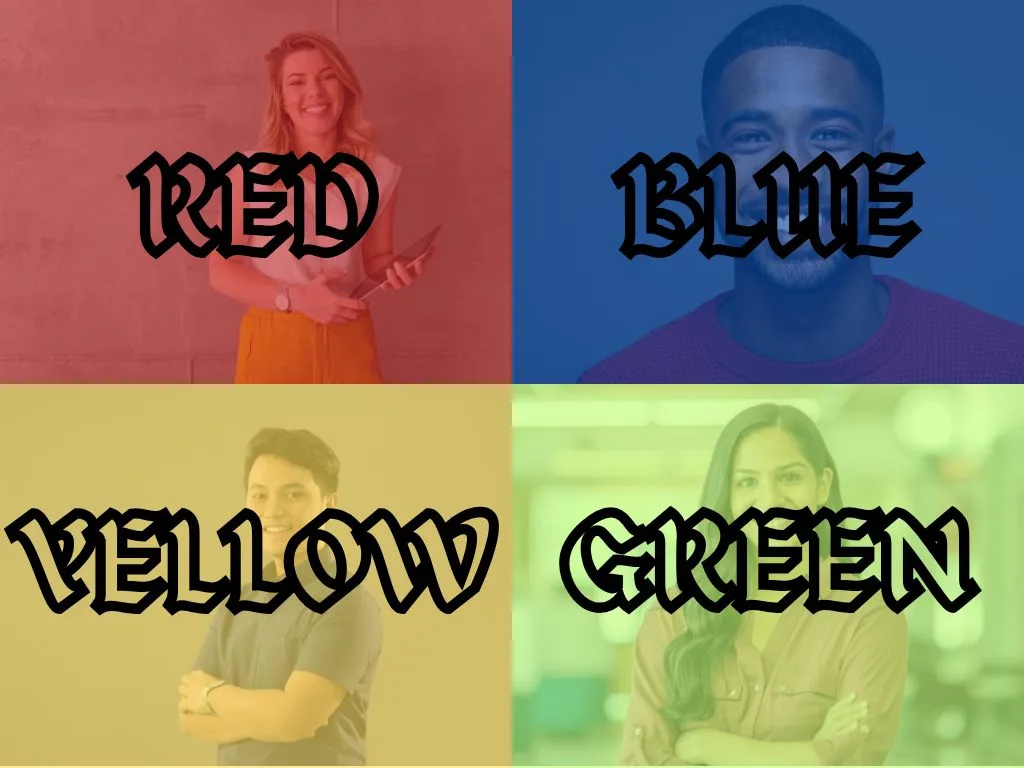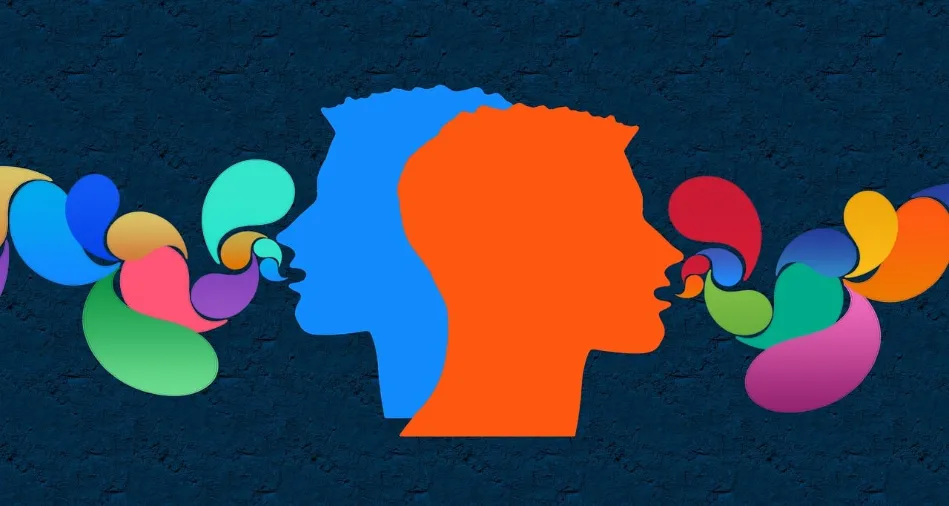
In this article, we’ll delve into the intricate connections between assertive empathy, transformative leadership1, and the personality color traits of blue, red, green, and yellow. By understanding these relationships, aspiring and seasoned leaders alike can gain valuable insights into their own leadership style and learn how to adapt their approach to better suit their team and organizational needs.
Leadership is a multifaceted concept that has been studied and defined in various ways throughout history. As our understanding of human behavior and organizational dynamics evolves, so too does our approach to effective leadership. In recent years, the concepts of assertive empathy and transformative leadership have gained significant traction in the business world. These leadership styles, when combined with an understanding of personality color traits, can create a powerful framework for developing and honing leadership skills.
Personality Color Traits
The concept of personality color traits offers a simple yet effective way to categorize and understand different personality types. This model divides personalities into four main colors: Blue, Red, Green, and Yellow. Each color represents a distinct set of characteristics, preferences, and tendencies that influence how individuals interact with others and approach their work.
Blue: The Analytical Thinker
Blue personalities are often characterized by their:
- Analytical and logical approach to problem-solving
- Attention to detail and precision
- Preference for structure and organization
- Tendency to be reserved and introspective
- Strong desire for facts and data to support decisions
In a leadership context, blue personalities excel at:
- Strategic planning and long-term thinking
- Creating systems and processes for efficiency
- Maintaining high standards of quality
- Providing clear, fact-based communication
Red: The Action-Oriented Achiever
Red personalities are typically known for their:
- Decisive and action-oriented nature
- Competitive spirit and drive for results
- Confidence and assertiveness
- Willingness to take risks and face challenges head-on
- Focus on efficiency and getting things done quickly
As leaders, red personalities often shine in:
- Setting ambitious goals and pushing for their achievement
- Making quick decisions in high-pressure situations
- Driving change and innovation within organizations
- Motivating teams to perform at their best
Green: The Empathetic Harmonizer
Green personalities are characterized by their:
- Strong emphasis on relationships and team harmony
- Empathetic and supportive nature
- Preference for collaboration and consensus-building
- Patient and calm demeanor
- Focus on personal growth and development
In leadership roles, green personalities excel at:
- Creating a positive and inclusive team environment
- Mediating conflicts and finding win-win solutions
- Nurturing talent and supporting individual growth
- Building strong, lasting relationships with team members and stakeholders
Yellow: The Enthusiastic Visionary
Yellow personalities are known for their:
- Creativity and innovative thinking
- Enthusiasm and optimism
- Ability to inspire and motivate others
- Flexibility and adaptability
- Big-picture thinking and visionary ideas
As leaders, yellow personalities often thrive in:
- Generating new ideas and innovative solutions
- Inspiring teams with their vision and passion
- Adapting quickly to change and uncertainty
- Creating a fun and energetic work environment
The Essence of Assertive Empathy
Assertive empathy is a leadership approach that combines the strength and directness of assertiveness with the understanding and compassion of empathy. This powerful combination allows leaders to communicate clearly and effectively while maintaining a deep connection with their team members.
Key Components of Assertive Empathy
- Clear Communication: Assertive empathetic leaders express their thoughts, feelings, and expectations clearly and directly, without being aggressive or passive.
- Active Listening: They make a conscious effort to truly understand others’ perspectives, concerns, and needs.
- Emotional Intelligence: These leaders are adept at recognizing and managing their own emotions, as well as those of others.
- Boundaries: While being empathetic, they maintain healthy boundaries and are able to say “no” when necessary.
- Conflict Resolution: Assertive empathetic leaders address conflicts head-on, seeking mutually beneficial solutions.
Benefits of Assertive Empathy in Leadership
- Improved team communication and collaboration
- Increased trust and respect between leaders and team members
- Enhanced problem-solving and decision-making capabilities
- Greater employee engagement and job satisfaction
- Reduced workplace stress and conflict
Transformative Leadership: Inspiring Change and Growth
Transformative leadership is an approach that focuses on inspiring and motivating followers to achieve extraordinary outcomes. This leadership style emphasizes the importance of vision, values, and personal growth, both for the leader and their team members.
Core Principles of Transformative Leadership
- Inspirational Motivation: Transformative leaders articulate a compelling vision that resonates with their team’s values and aspirations.
- Intellectual Stimulation: They encourage creativity, critical thinking, and innovation among their followers.
- Individualized Consideration: These leaders pay attention to each team member’s unique needs, strengths, and development areas.
- Idealized Influence: Transformative leaders serve as role models, demonstrating high ethical standards and earning the trust and respect of their followers.
Impact of Transformative Leadership
- Increased employee motivation and commitment
- Enhanced creativity and innovation within the organization
- Improved organizational performance and adaptability
- Stronger organizational culture and shared values
- Greater employee empowerment and personal growth
Read our article below to learn more about the transformative leadership style.
Linking Personality Color Traits to Assertive Empathy and Transformative Leadership
Understanding how personality color traits intersect with assertive empathy and transformative leadership can provide valuable insights for leaders seeking to enhance their effectiveness. Let’s explore how each color trait aligns with these leadership approaches:
Blue Personalities: Analytical Empathy and Structured Transformation
Blue personalities can excel in assertive empathy by:
- Using data and logic to support their empathetic understanding
- Providing clear, structured feedback and expectations
- Developing systematic approaches to address team members’ needs
In transformative leadership, blue personalities can shine by:
- Creating detailed, well-researched visions for the future
- Implementing structured personal development plans for team members
- Using analytical skills to identify areas for organizational improvement
Red Personalities: Direct Empathy and Results-Driven Transformation
Red personalities can leverage assertive empathy through:
- Combining their natural assertiveness with active listening skills
- Providing direct, actionable feedback while showing understanding
- Using their drive for results to motivate and support team members
In transformative leadership, red personalities can excel by:
- Setting ambitious, inspiring goals for the organization
- Driving change and innovation with passion and energy
- Challenging team members to push beyond their comfort zones
Green Personalities: Nurturing Empathy and Collaborative Transformation
Green personalities naturally align with assertive empathy by:
- Balancing their strong empathetic skills with clear communication
- Creating a supportive environment that encourages open dialogue
- Using their relationship-building skills to foster trust and understanding
In transformative leadership, green personalities can thrive by:
- Developing a vision that emphasizes personal growth and team harmony
- Facilitating collaborative problem-solving and decision-making processes
- Nurturing a culture of continuous learning and development
Yellow Personalities: Enthusiastic Empathy and Visionary Transformation
Yellow personalities can excel in assertive empathy through:
- Combining their natural enthusiasm with active listening skills
- Using their creativity to find unique solutions to team members’ concerns
- Inspiring open communication with their positive energy
In transformative leadership, yellow personalities can shine by:
- Crafting inspiring, innovative visions for the future
- Encouraging out-of-the-box thinking and creative problem-solving
- Creating an energetic, forward-thinking organizational culture
Developing Assertive Empathy Across Color Traits
While each personality color trait has its natural strengths in assertive empathy, leaders can develop this skill regardless of their dominant color. Here are some strategies for each color:
Blue: Balancing Analysis with Emotion
- Practice active listening without immediately jumping to problem-solving
- Incorporate emotional check-ins alongside data-driven discussions
- Use empathy mapping techniques to better understand team members’ perspectives
Red: Tempering Directness with Understanding
- Pause before responding to allow for more thoughtful, empathetic replies
- Ask open-ended questions to gain deeper insights into others’ viewpoints
- Practice reflective listening to ensure accurate understanding of others’ concerns
Green: Asserting Needs While Maintaining Harmony
- Set clear boundaries and communicate personal needs effectively
- Practice using “I” statements to express thoughts and feelings directly
- Develop conflict resolution skills to address issues while preserving relationships
Yellow: Grounding Enthusiasm in Empathetic Understanding
- Focus on one person at a time during conversations to improve listening skills
- Use creative techniques like role-playing to enhance empathetic understanding
- Balance idea generation with practical consideration of others’ needs and concerns
Enhancing Transformative Leadership Across Color Traits
Leaders of all color traits can develop their transformative leadership skills. Here are some strategies tailored to each color:
Blue: Infusing Vision with Data and Structure
- Use data visualization techniques to communicate vision more effectively
- Develop structured roadmaps for achieving transformational goals
- Implement metrics to track progress and adjust strategies as needed
Red: Balancing Drive with Inspiration
- Practice storytelling techniques to make vision more compelling and relatable
- Develop coaching skills to support individual team member growth
- Learn to celebrate small wins alongside big achievements
Green: Amplifying Collaborative Transformation
- Facilitate team-building exercises to strengthen shared vision and values
- Implement mentoring programs to support individual and collective growth
- Use appreciative inquiry techniques to drive positive organizational change
Yellow: Grounding Vision in Practical Implementation
- Develop project management skills to turn creative ideas into actionable plans
- Practice active reflection to learn from both successes and failures
- Collaborate with blue and red personalities to add structure and drive to visionary ideas
Integrating Assertive Empathy and Transformative Leadership
By combining assertive empathy with transformative leadership, leaders can create a powerful approach that inspires, motivates, and supports their team members. Here are some strategies for integration:
- Empathetic Vision-Sharing: Communicate your transformative vision while actively listening to and addressing team members’ concerns and aspirations.
- Individualized Inspiration: Use your understanding of each team member’s needs and strengths to tailor your transformative approach to their personal growth.
- Assertive Feedback for Growth: Provide clear, direct feedback that supports team members’ development within the context of the larger organizational vision.
- Collaborative Innovation: Encourage open dialogue and creative problem-solving while maintaining a focus on the transformative goals of the organization.
- Empathetic Change Management: Address fears and resistance to change by demonstrating understanding and providing clear rationales for new directions.
The Role of Emotional Intelligence in Personality Color-Based Leadership
Emotional intelligence plays a crucial role in both assertive empathy and transformative leadership. Leaders can enhance their emotional intelligence across all color traits:
Blue: Developing Emotional Awareness
- Practice mindfulness techniques to increase self-awareness
- Use journaling to explore and understand personal emotions
- Learn to recognize and name a wide range of emotions in self and others
Red: Cultivating Emotional Regulation
- Develop stress management techniques to maintain composure under pressure
- Practice pause-and-reflect strategies before reacting to emotional situations
- Learn to channel strong emotions into productive actions
Green: Enhancing Social Skills
- Develop advanced conflict resolution techniques
- Practice giving and receiving constructive feedback
- Enhance nonverbal communication skills to better connect with others
Yellow: Balancing Optimism with Realism
- Develop critical thinking skills to complement natural optimism
- Practice empathetic listening to gain a more balanced perspective
- Learn to temper enthusiasm with practical considerations
Adapting Leadership Style to Team Dynamics
Effective leaders must be able to adapt their style to suit the needs of their team and the demands of different situations. Here are some strategies for flexible leadership across color traits:
Blue: Embracing Flexibility Within Structure
- Develop contingency plans to allow for adaptability within structured approaches
- Practice improvisational techniques to become more comfortable with uncertainty
- Learn to balance detail-orientation with big-picture thinking
Red: Tempering Drive with Patience
- Develop skills in facilitation and consensus-building
- Practice active waiting and strategic timing in decision-making
- Learn to appreciate and leverage the strengths of slower-paced team members
Green: Balancing Harmony with Necessary Conflict
- Develop skills in constructive confrontation
- Practice setting and communicating clear expectations and boundaries
- Learn to navigate and resolve team conflicts effectively
Yellow: Grounding Creativity in Practicality
- Develop skills in project planning and execution
- Practice breaking down big ideas into actionable steps
- Learn to balance innovation with consideration of resource constraints
The Takeaway
By understanding the interplay between personality color traits, assertive empathy, and transformative leadership, leaders can develop a more nuanced and effective approach to guiding their teams and organizations. This color-conscious leadership style allows for:
- Greater self-awareness and personal growth
- Enhanced ability to connect with and motivate diverse team members
- Improved adaptability in the face of changing organizational needs
- More effective communication and conflict resolution
- Stronger, more resilient organizational cultures
As leaders continue to navigate the complex and ever-changing business landscape, the ability to leverage the strengths of different personality color traits while practicing assertive empathy and transformative leadership will become increasingly valuable. By embracing this holistic approach, leaders can create more dynamic, innovative, and successful organizations that are well-equipped to thrive in the future.
- Transformational leadership is a theory of leadership when a leader’s behaviors influence their followers and inspire them to perform beyond their perceived capabilities. ↩︎











